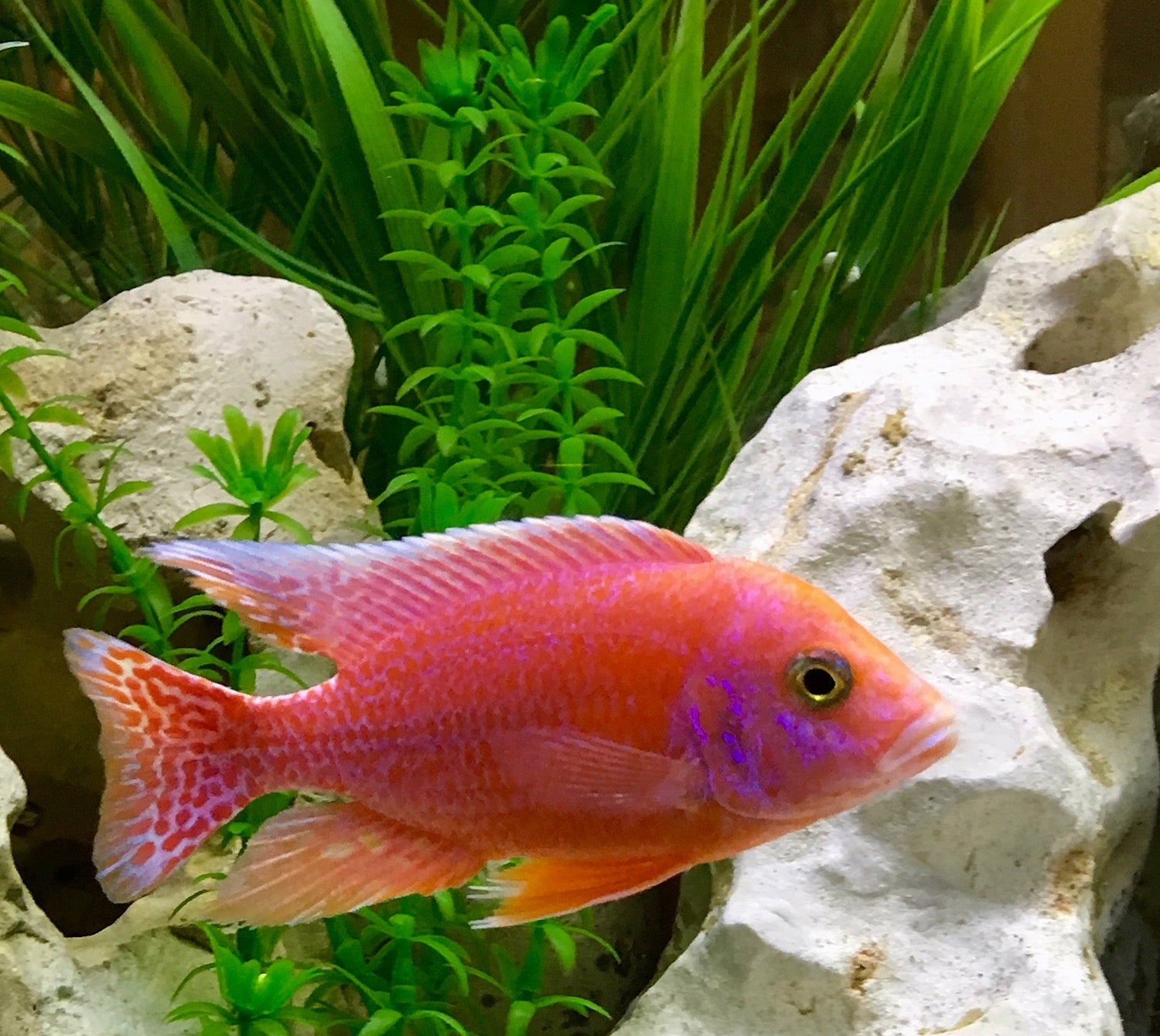Cichlids Care | Guide & Tips on How to Care for African Cichlids
Proper African cichlid care is not as complicated as you may think. Having a tank full of happy and vibrantly-colored cichlids is achievable with the right products and information. Whether you’re a new aquarium owner or an experienced hobbyist, you’ll find this guide to African Cichlids care to be a trusty companion for your reference.

Cichlids care starts with a foundational understanding of these dynamic freshwater beauties. Although African cichlids are found in Asia and South America, their roots are deeply planted in Africa. The three primary lakes are: Lake Malawi, Lake Tanganyika, and Lake Victoria. Lake Malawi is home to some of the most popular cichlids you see in the hobby today.
Lake Malawi is Africa’s third largest lake and is home to many types of cichlids. In fact, our research has uncovered over 2,000 species! To clarify, the African cichlid care tips provided in this guide are for the most common species originating from Lake Malawi—Haps, Mbunas, and Peacocks.
Same Family – Unique Considerations
African cichlids have one thing in common—they’re all beautiful. Where they can differ is in their diet, temperament, size at full maturity, and longevity. These are all considerations that will help determine the size of tank that you select as well as the type of cichlid that you choose to keep. It’s advisable to group fish of the same species and origin in the same tank. This results in less aggression and simplifies dietary needs.
Ideal Tank Size
Contrary to some opinions, bigger is usually better! African cichlids can grow to 13 inches in length. So, if you plan to keep your fish long term, you may want to consider starting with a tank size that will accommodate for their full growth potential. If you start with a tank that’s too small, you may have to rehome or move your fish to a larger tank which is costly and time-consuming.
Remember, cichlids are from the wild where they have open swimming space. They are also territorial, especially Mbunas—they love to claim their spot in the tank. Some species prefer to hang out in rock-formed caves while others are happy to just cruise the tank, but they all need space. Keep these essential factors in mind as you shop for an appropriate tank to last their lifetime, which could be 8-10 years. Whichever cichlid type you choose the minimum tank size should be 55-75 gallons, and 75 gallons for Haps, for success at full maturity.
If you want to take a deeper dive into Malawi cichlids, add author Ad Konings to your reading list. He has an excellent Malawi cichlid book that offers an in-depth look into the wonderful world of African cichlids from Lake Malawi.
Optimum Water Parameters
Lake water in their natural environment is nutrient-rich and warm. To best simulate their natural habitat, the optimal water pH should be maintained between 7.8 and 8.6 and is best achieved by using natural limestone rock in your tank called Texas Holey Rock. Texas Holey Rock buffers the water pH levels naturally and provides some of the best water conditions for your cichlids. Is the water pH low in your tank? You could be missing out on the full color potential of your fish. You can quickly check with this easy-to-use pH tester to see if you need Texas Holey Rock for your tankmates.
A stable water temperature in the range of 76°F - 82° is best for cichlids. Choose an aquarium water heater rated (in watts) for the size of your aquarium.
Feeding & Supplements
Whether you purchase online or at your local store, you’ll find a broad selection of cichlid food available. Many of the common African cichlids are omnivorous—they prefer a diet rich in protein. However, some require a more veggie-based diet such as Mbunas and most cichlids like spirulina flake as part of a healthy diet. One secret to boost the saturation of color is to feed your cichlids krill. Food rich in krill will help enhance the color of most cichlids. We use Dainichi Color Supreme for our show tank cichlids which has a nice balance of high quality krill and spirulina.
Bloodworms are a favorite of African cichlids and an excellent natural protein supplement. What’s more, it’s truly entertaining to watch the fish devour bloodworms within seconds! It's fun entertainment for children and adults alike. You can usually find bloodworms at your local fish store which are sold in frozen cube packs for just a few dollars.
There are many supplements on the market in liquid and powder form. We do not endorse any particular brand but we do recommend using supplements as part of proper cichlids care and to support their vibrant colors.
Aquarium Lighting
Quality lighting is important for the colorful display of your cichlids while also maintaining a healthy tank environment for proper African cichlid care. We suggest using LED lights, for most applications, in a color spectrum intended to enhance the color of your fish. We think this Current USA fixture is an outstanding value.
Time it right. Just as the sun in their natural habitat warms the lake for 8-12 hours each day, we recommend giving your cichlids a break from the bright lights as your evening wraps up. Tip: gradually increasing light brightness in the morning or turning on another light in the room first will help to prevent spooking your fish as they awaken from their break.
Filtration – Water Changes – Cleaning & Additives
Maintaining a good filtration system will improve water quality and ultimately the health of your fish. You don’t need to get too caught up in which filter to use—there are numerous options and we have had great results with Fluval filters. Just be sure to choose a filter size that will process all of the water (gallons per hour) in your tank around five times each hour. For example, a 55 gallon aquarium should have one or more filters with a total flow volume of at least 275 gph.
With a heavily stocked tank, it is absolutely necessary to maintain a good cleaning regime to keep your tank free of bacteria overgrowth. Be sure to follow the water change regime recommended for your tank size and cichlid species. A weekly 25-50% water change is a good time interval to start with. Routine water changes will help to reduce nitrate buildup which is toxic to fish.
The rule of thumb is to use a cleaning frequency that suits your tank size, fish population, and their feeding and waste activity. To keep water conditions consistent and healthy, consider having a calendar reminder on your phone or keep a simple log of your water changes and filter cleaning under your tank stand. If you’re new to this hobby or just need to stock up, don’t forget Seachem Prime for every water change!
Whether you love the vibrant marine-like colors of cichlids or the interesting Frontosa personality, you’ve made an excellent choice to keep these beauties in your home or office and will enjoy them for years to come.
Feel free to contact us for additional tips or to purchase Texas Holey Rock for your tank.
Setting Up Your Tank?
